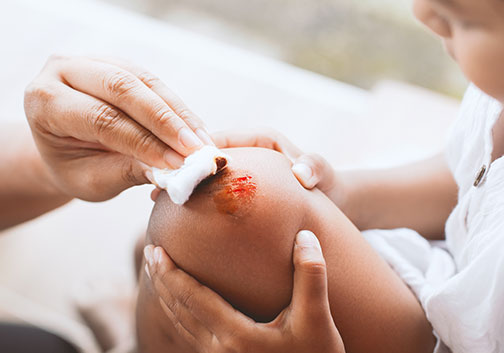INFECTIONS
AND WOUNDS
INFECTIONS AND WOUNDS
OVERVIEW OF INFECTIONS
When pathogenic organisms overcome the body’s external barriers (skin and mucous membranes) and reproduce in large numbers, an infection can occur. Transmission of the pathogen may occur directly, e.g. through contact with an infected individual, or indirectly through objects, food or animals, and depending on the area affected, there may be a local reaction (confined to a single area) or a systemic reaction (when it affects the entire organism).


There are several types:
– Bacterial infections, which often result in fever and/or purulent exudate
– Viral infections, most commonly affecting the upper airways
– Fungal infections, caused by fungi and often superficial
– Parasitic infections, when a parasite is responsible
Infections often affect individuals in whom the immune system is debilitated due to illness or prolonged therapy, but they can also develop in healthy individuals.
WOUNDS
A wound occurs when a traumatic event causes injury to skin and tissue. Wounds may be superficial or deep, more or less extensive, and may also affect deeper structures such as nerves, tendons or blood vessels.
In the immediate area, the main danger blood loss due to ruptured blood vessels: this often stops within a few minutes or settles on its own, but in some cases the laceration may affect extensive areas or large arteries, with more significant bleeding.
When a wound is contaminated with dirt or bacteria, an infection can develop which, if left untreated, can lead to delayed healing or problematic complications.

